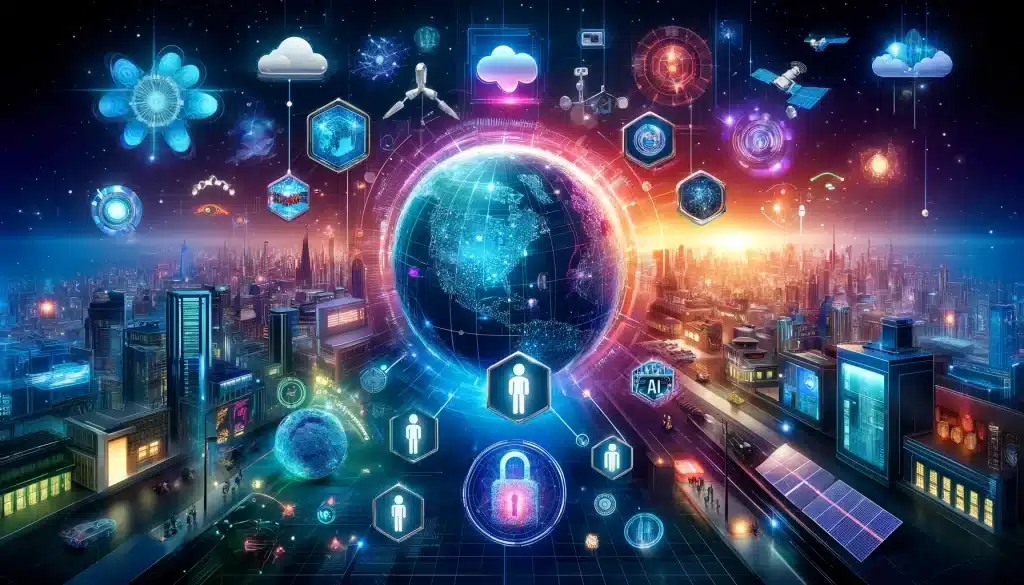Trends in CyberSecurity
As we navigate through 2024, cybersecurity continues to evolve at an unprecedented pace. Organizations increasingly integrate advanced security measures to safeguard their digital assets and maintain customer trust. This post explores six key trends shaping cybersecurity’s future, highlighting how these trends are not just predictions but realities already transforming the industry. Let’s dive into the core areas defining the cybersecurity landscape today.
1. Security Is Integral to Everything Organizations Do
In today’s digital age, security is no longer an afterthought but a fundamental aspect of business operations. Organizations are embedding security into every infrastructure layer to ensure continuous protection and compliance. This shift towards a security-first approach is driven by the need to address increasing threats and risks. Automated security services and tools are crucial in this transition, making it easier for businesses to maintain a robust security posture while focusing on growth and innovation.
2. Diversity in the Workforce Addresses the Security Talent Gap
The cybersecurity talent gap remains a significant challenge, but diversity is a vital part of the solution. Organizations prioritize hiring individuals from diverse educational and career backgrounds, including those who are neurodiverse and from different cultures. This approach brings a wider range of problem-solving abilities and perspectives, strengthening overall security defenses. Investing in diversity, equity, and inclusion (DE&I) initiatives and reevaluating hiring standards and practices helps close the talent gap and enhance security.
3. Automation Driven by AI/ML Enables Stronger Security
Artificial intelligence (AI) and machine learning (ML) are revolutionizing cybersecurity by adding a critical automation layer. These technologies help security engineers create more secure architectures and applications, detect threats proactively, and respond quickly to incidents. AI/ML-driven tools such as Amazon GuardDuty, Amazon Detective, and AWS Macie are examples of how automation enhances security by providing intelligent recommendations, identifying anomalies, and reducing manual intervention.
4. Greater Investment in Data Protection
Data protection is a top priority for organizations as the volume of data continues to grow exponentially. Governments are responding to public demand for data protection by implementing stricter regulations, and organizations are increasing their investment in data protection programs. This includes assessing risks, performing ongoing administration tasks, and developing tools to reduce data risks. AWS services such as IAM, CloudTrail, and Macie help organizations manage data protection effectively, ensuring compliance and enhancing customer trust.
5. Advanced Forms of Multi-Factor Authentication (MFA)
Multi-factor authentication (MFA) is becoming more widespread, providing an additional layer of security beyond passwords. The future of MFA lies in multimodal biometric authentication, which combines physical and behavioral characteristics for a more secure and frictionless user experience. Technologies such as Yubikeys, Windows Hello, and Apple FaceID exemplify how MFA is evolving. Organizations are encouraged to stay updated on advancements in MFA to enhance their security capabilities.
6. Quantum Computing and Its Impact on Security
Quantum computing is advancing, and its implications for cybersecurity are significant. While quantum computing poses challenges to current cryptographic methods, it also offers opportunities for developing new, more secure algorithms. Organizations should stay informed about quantum-safe cryptography and prepare for a post-quantum world. AWS is already working on implementing post-quantum encryption to ensure data security in the future.
These trends highlight the dynamic nature of cybersecurity and the ongoing efforts to adapt to new challenges. By staying ahead of these trends, organizations can better protect their digital assets and maintain a secure environment for their operations.
If you found this article helpful, consider subscribing to our website here for more insights and updates. Additionally, check out our YouTube channel at www.youtube.com/lufsec for additional resources and tutorials.

